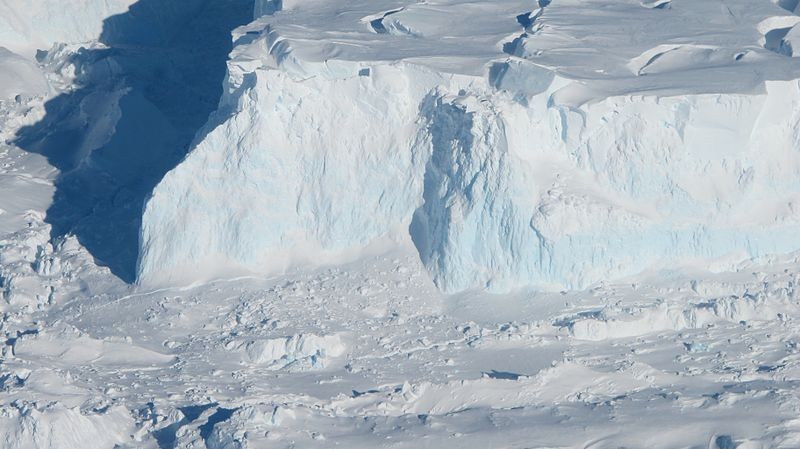Scientists predict that the so-called "doomsday glacier" in Antarctica, dubbed due to its high risk of collapsing and danger to the global sea level, might retreat quickly in the next few years, raising concerns about the dramatic sea level increase that would accompany its possible extinction.

Scientists claim that "The Doomsday Glacier," which has the potential to increase sea level by many feet, is barely hanging on.
Dire Situation
As the earth heats, the Thwaites Glacier, which may raise sea levels by several feet, is disintegrating along its submerged base. Scientists tracked the glacier's historical retreat in a research published on Monday in the journal Nature Geoscience to predict what the glacier will probably do in the future.
They discovered that the glacier's base had been detached from the seafloor in the last two centuries and was retreating at a pace of 1.3 miles (2.1 kilometers) per year. That is more than twice the pace researchers have seen over the last few years.
Alastair Graham, a marine geophysicist at the University of South Florida and the study's principal author, stated in a press release that the rapid disintegration may have happened "as recently as the mid-20th century."
Also Read : Scientists Alarmed as Massive Conger Ice Shelf in Antarctica Collapse Due to Record-Breaking Heat
Doomsday Glacier's Condition

It implies that once the Thwaites move past a seabed ridge that is assisting in keeping it in check, it will be able to make a quick retreat in the near future.
According to Robert Larter, a marine geophysicist and one of the study's co-authors from the British Antarctic Survey, "Thwaites is hanging on by its fingernails today, and we should expect to see big changes over small timescales in the future - even from one year to the next - once the glacier retreats beyond a shallow ridge in its bed."
One of the widest glaciers on Earth, the Thwaites Glacier in West Antarctica, is bigger than the state of Florida. However, it just makes up a portion of the West Antarctic ice sheet, which, according to NASA, is large enough to increase the sea level by up to 16 feet.
This area has been extensively watched as the climate crisis has intensified due to its fast melting and potential for extensive coastal devastation.
For decades, experts have been concerned about the Thwaites Glacier itself. Researchers began debating whether it posed a serious risk of collapsing as early as 1973. Nearly ten years later, they discovered that since the glacier is tethered to the seabed rather than to land, warm ocean currents might cause it to melt from below, leading to its destabilization.
Rapid Melting
The Thwaites area has been referred to as the "weak underbelly of the West Antarctic ice sheet" due to that research.
Researchers started tracing the Thwaites' quick withdrawal in an unsettling series of studies in the twenty-first century.
According to a news release, the 20-hour trip that scanned an underwater region the size of Houston resulted in Monday's results, indicating that the Thwaites can retreat far more quickly than previously believed.
Graham warned that "a slight kick to the Thwaites might result in a major response."
Related Article : Ocean Temperature Reaches "Point of No Return" as Climate Change Creates Irreversible Scenario
For Environmental News, don't forget to follow Nature World News!
© 2026 NatureWorldNews.com All rights reserved. Do not reproduce without permission.





